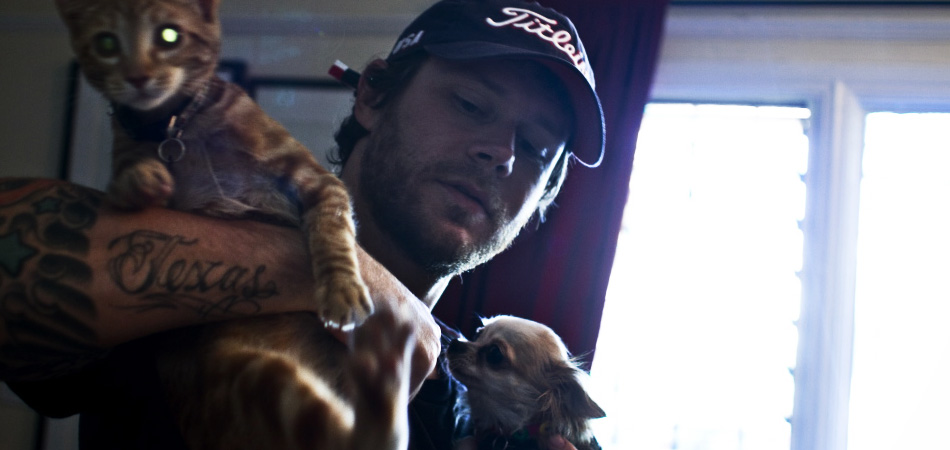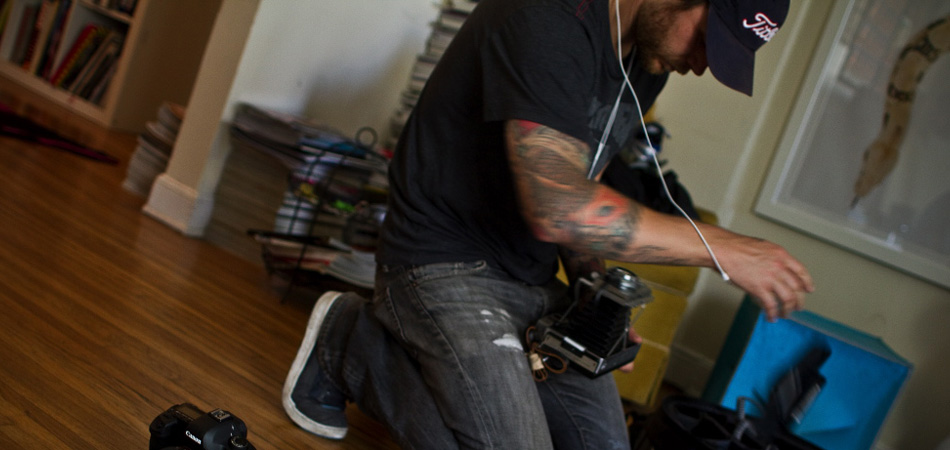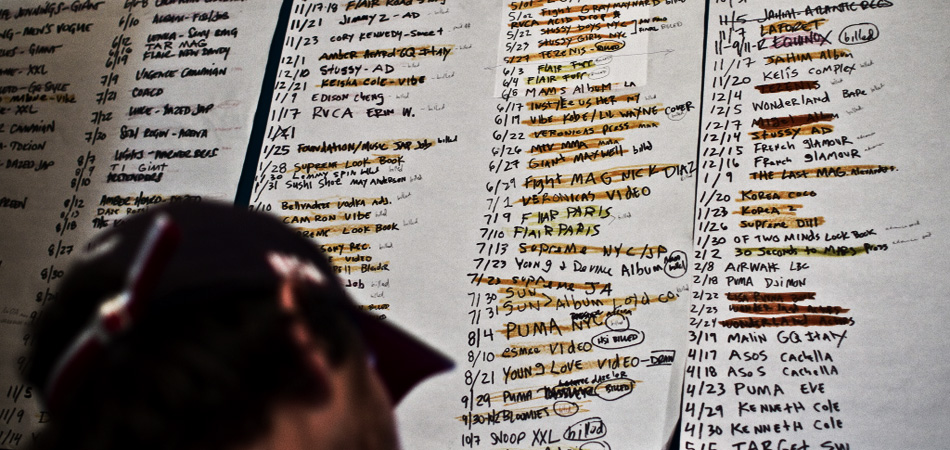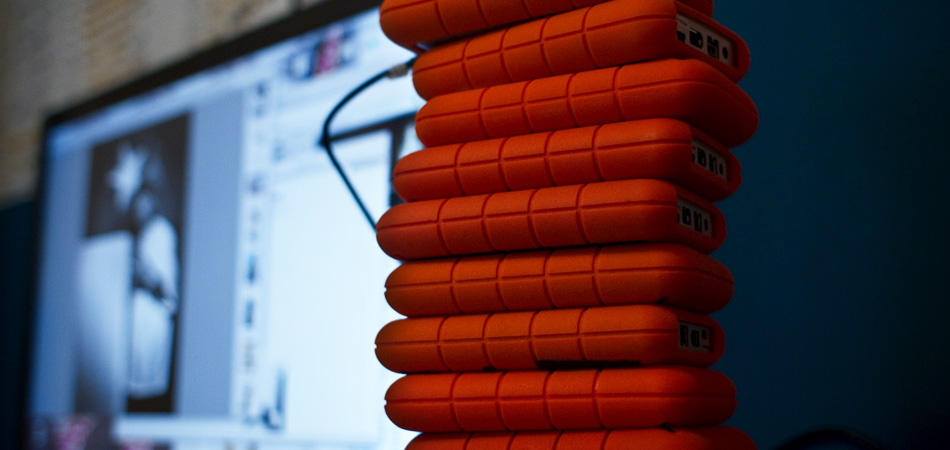Kenneth Cappello: Capturing 30 Years of Stussy
Chosen to shoot Stussy’s 30th anniversary, we took the opportunity to speak with photographer Kenneth Cappello about his beginnings, his opinion on the state of photography, and how he approaches his line of work.

2010 has been a monumental year for Stussy. Celebrating its 30th anniversary has been a testament to the brand’s ability to roll with the punches and remain relevant three decades since its inception. Having played an integral part in the fashion of many growing up, many have laid claim to Stussy as some of their early fashion influences. Although countless creatives having worked hand-in-hand with Stussy on a consistent basis, photographer Kenneth Capello is arguably one of the most notable names. His resume includes many of the fashion and pop culture world’s most influential personalities. Chosen to shoot Stussy’s 30th anniversary, we took the opportunity to speak with Kenneth about his beginnings, his opinion on the state of photography, and how he approaches his line of work. In addition, this past weekend at the (capsule) tradeshow in Paris, Stussy presented an exhibition of photographs by lensman Kenneth Cappello that celebrate the brand’s 30th anniversary. The exhibition was on view alongside an exhibit at colette, that featured a series of archival Stussy photos.
Interview: Eugene Kan
Photography: Andrew White

If you weren’t a photographer, you’d probably be doing…?
Tour managing a metal band or being a cut man in the UFC.
Growing up in Houston, did any aspect of your youth influence how you approach photography, or would you say your background in skating and punk had a larger impact?
It’s hard to separate the two. My dad gave me my first camera and taught me how to read the light meter and use it. I don’t really know why it stuck. I was given a lot of stuff as a kid, but for some reason, it stuck. I was also given a golf club but I didn’t turn into Tiger Woods. I played baseball, but didn’t dream of being a pitcher for the Angels. I think I just had an interest in it from the get go. I was going to Eckerd’s Drugstore where it was four dollars for double prints and I’d put them in my little photo book. Skateboarding and punk was what I was into, so that’s what I took photos of along with pictures of my stuffed animals and snakes.
As a professional photographer, has it detracted from your initial love and interest? Do you find it difficult sometimes to just go out and shoot photos for yourself?
Yes it does, very much so. And I wish it didn’t. Sometimes I put cameras under the front seat of my car, just so I have it with me at all times. I try to go out with a camera in my pocket more regularly these days, to take it with me like I used to.
Had you got your start in photography now relative to back in 2001, do you think you would have experienced a more difficult time due to the fact photography, and namely digital photography, has made it all the more accessible?
Everybody’s a photographer now. It’s a lot more accessible. It’s a lot more of a joke actually. I don’t really think there’s a lot of art left in taking photos. If I see one more hipster art show with puking or track bikes or torn up Chuck Taylor’s or graffiti, I mean, it’s enough and it’s been done. There’s no pushing or pulling film, no shooting at the right exposure. It’s just a different thing now. It doesn’t feel the same to me. But if you have a good eye, then that’s a different story. Take a dude like Andrew who shot me for this interview. He showed up with a small camera and took kick ass photos. Some people got it. And some people just don’t get it. I have Jim Jones telling me how to shoot him, Jared Leto asking me while I’m shooting him why I’m shooting with a 28mm lens. Shit, I can sing. Does that mean I can get a record deal? And now creative directors are thinking they can push the button because they’ve done 15 shoots and can look at a screen. Is that all it takes?

Since most of your work involves portraits, has this always been your preferred form? Or is it more along the lines of how the photography business works and how commercial work is almost all inherently focused on portrait work?
I didn’t know that most of my work was portraits, but I’m not sure what a portrait is really… what’s a portrait? A photo of somebody? I just take photos of people. If I take a photo of my dog, is that a portrait? If it’s a model is it a portrait? I used to get my portrait taken for the yearbook in school or at Olan Mills with a wagon wheel for my mom’s wallet. I guess that’s what I think is a portrait. Remember that? When people used to walk around with 30 photos in their wallet? When’s the last time you saw that?
How important is a competent model required in a photoshoot? Or is it your job as a photographer to ensure they do what they’re supposed to?
Well, you know I can’t cut open a girl who has an IQ of a cantaloupe… I can’t open her head and put a smarter brain in it, or give her a personality, or a life. But if a model is competent and professional it makes a job 4000% easier. But it actually is my job to get the most out of my subjects, regardless, cantaloupe or not.
Having shot campaigns with brands from different parts of the fashion spectrum, do they all offer the same creative freedom, whether it be high fashion or streetwear? Or does working with somebody like a Supreme or Stussy lend for more opportunities to explore different concepts?
Obviously different brands offer different freedoms. Stussy trusts me, we have a long-standing relationship. I know exactly what they want and I understand their brand. You know with other brands, it’s obviously different. The longer the relationship, the more freedom I tend to have.
How do you conceptualize your shoots?
I don’t. Everybody wants a concept. I get it. But you know, if one more rap artist calls me up and asks me what the concept for the shoot is, it’s just like why does there always have to be a fucking concept? I just want to take good photos. Sometimes you just need to let what’s going to happen, happen. The best photos I take are the spontaneous ones. But if someone’s paying a bunch of money, I’ll make them a concept. Whatever, we can have 10 concepts.

With Stussy celebrating its 30th anniversary, to you personally what does this mean?
I remember seeing Stussy when I was a kid. I grew up with Stussy and Gotcha. It’s been around for a long time and it’s maintained its integrity. They have always been true to themselves and it works. I respect that. It means something when something that was around when I was a kid going to a skate shop in ‘85 is still relevant today. What happened to Town & Country? OP was the shit and now it’s just a license. Gotcha ain’t around. Vision Streetwear isn’t the same. In 30 years, it’s stood the test of time.
When shooting the 30th anniversary campaign, what was Stussy looking to convey and what did you personally want to add to the mix?
Stussy was looking to take it back to the early days. Black and white, plain and simple, like the early ads from the 80s. What I wanted was to push the styling a little bit more and the characters. We wanted to simplify it and keep it Stussy.
What has been your favorite 30th anniversary Stussy shot so far this year?
Ad wise? The girl with the Native American headdress on. But there are more coming. It’s hard to pick a favorite.
Any last words? Can we expect any more books or video work this year?
I have a book coming out with The Kills next record that I’ve been working on for four years. And I’ve been working on a book documenting mixed martial arts. As for music videos, we’re tryin’. And last words? Hmmmm… Don’t do drugs. Be kind to animals. Don’t gossip so much. And if someone hits you, hit ‘em back harder.












